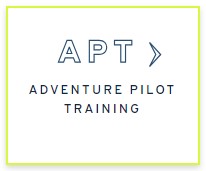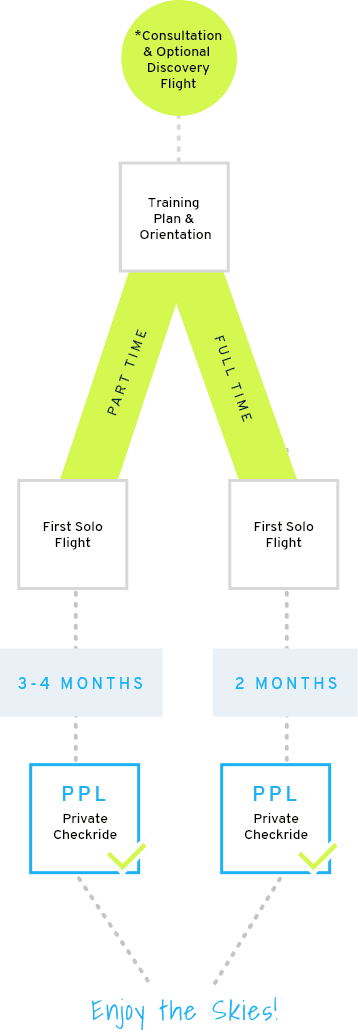Private Pilot License (PPL)

Private Pilot License (PPL)
.jpg)
Adventure Pilots
Fly for fun, train like a pro.
Whether your desire is to fly your family or friends to a lake for an afternoon of fun, or to your favorite eatery, earning your Private Pilot’s License (PPL) is where your #adventure begins. It is where all pilots begin whether your goal is to fly for recreation or as a career pilot.
At Flex Air, you will be assigned and work on one with one of our flight instructors. Your instructor will begin by taking the time to learn about you. Your program will be based on your unique scheduling needs and learning style. We believe in being flexible whenever possible.
.png?width=150&height=150&name=CPC%20square%20(1).png)
.png?width=200&height=200&name=PACIFIC%20REGION%20(2).png)


Award-Winning Training
Flexible Timelines, On Your Schedule.
At Flex Air you have the choice of a full-time or a part-time training program. By choosing a full-time program, you can expect to earn your private pilot’s certificate in as little as 2 months, while if part-time you can expect to complete your program in 3-6 months.
Every week you submit an online form telling our operations team how much flying you want, and when you're available. Then we write a flight schedule around your preferences. Changing work schedule or other commitments? No problem, you can change your schedule preferences weekly.
How much does a private pilot license cost?
The cost of obtaining a private pilot license typically ranges from $16,000 to $21,000. This estimate includes various expenses such as ground school fees, flight training costs, instructor fees, and the rental of aircraft for training purposes. Additionally, this range covers the cost of necessary materials, such as textbooks and navigation tools, as well as the fees for taking the required exams. The total cost can vary depending on the location, the flight school, the type of aircraft used for training, and the number of flight hours a student needs to become proficient.
- San Diego Private Pilot License (PPL) cost
- Kansas City Private Pilot License (PPL) cost
- Manhattan, KS Private Pilot License (PPL) cost
Get more flight time with an Instrument Rating
As we all know, weather can change rapidly, therefore the value of an Instrument Rating, is a more prepared and skilled pilot. Earning your Instrument Rating following your Private Pilot License lessens your ability to be limited due to weather. As a private pilot, you are limited to flying under clear weather conditions by what you can see or Visual Flight Rules (VFR). However, a private pilot with an Instrument Rating has the ability to fly in varied conditions such as clouds by using the instruments of the aircraft or under Instrument Flight Rules (IFR). You can expect to earn your instrument rating in as little as 6 weeks.
Quality flight training is a big investment…
For a huge career payoff! Pilot salaries are higher than ever before in the history of aviation and will keep rising for decades. Over the course of a typical career, an airline pilot might earn as much as $7 million.
To get there, make sure your Student FINANCING application is as strong as possible.
What students are saying about us…
HANNAH FOWLER
Hannah fell in love with aviation at a young age with memories of doing spins in a 172 with her dad. Following in both of her parent’s footsteps, she is working toward starting her own career in aviation, but she has never lost that innocent love for the adventure of flying.
Private Pilot License Flight Training FAQ
Questions about getting your pilot's license? Contact us and we can help you answer them...
The Private Pilot License, commonly known as PPL, is a type of pilot's license that legally allows individuals to fly aircraft privately, not commercially. In other words, you cannot make money from flying if you hold this license. This license is issued by the Federal Aviation Administration (FAA) in the USA and by corresponding authorities in other countries. It is the most commonly obtained pilot license worldwide.
To become a pilot and get your private pilot license, you generally need to go through pilot training at a registered flight school. The training involves classroom-based ground school lessons and practical flight training with a qualified flight instructor. You also need a Student Pilot Certificate and a medical certificate to start off your training.
According to the FAA, you need a minimum of 40 hours of flight time, which includes at least 20 hours of instructional flight time with an instructor and 10 hours of solo flight time. However, the average student typically requires between 50 to 60 hours of flight time to get their license.
A cross-country flight is one in which a pilot flies an aircraft from one airport to another that is more than 50 nautical miles away. The FAA requires potential private pilots to have at least 5 hours of cross-country flight time because it provides pilots with experience in navigating and flying longer distances, which forms the crux of flight planning and control.
The first step to becoming a private pilot is to obtain a student pilot certificate, pass an aviation medical examiner's check, and choose an FAA-approved flight training school for your ground school training and flight hours. It's also recommended to familiarize yourself with Federal Aviation Regulations.
The time it takes to earn your private pilot license depends on several factors, including how often you fly, your ability to learn and adapt new skills, and the weather conditions where you train. With consistent training, it could take you as little as 2 months part time students can take as long as 6-9 months to complete all requirements.
A private pilot license allows you to fly for pleasure and personal business, but you can't be compensated for flying. On the other hand, a commercial pilot license permits you to fly for hire. It involves advanced flight training and you're subjected to higher standards during the FAA's practical test.
According to FAA regulations, a minimum of 40 flight hours is required to earn a private pilot license. This includes at least 20 hours of flight with an instructor and 10 hours of solo flight.
Private Pilot Training includes ground school training for passing written tests, dual flights with an instructor for hands-on practice, solo flying to gain confidence, a cross-country flight, and preparation for FAA practical test.
Yes, obtaining a private pilot license is often the first step towards a professional pilot career. After this, pilots typically earn additional ratings such as Instrument and Commercial in order to qualify for pilot jobs.
A private pilot license allows you to fly virtually anywhere, day or night. However, flying in certain airspace or airports requires communication with Air Traffic Control and strict adherence to FAA regulations.
The difference mainly lies in the limitations and training requirements. A sport pilot certificate requires fewer flight hours of training and comes with more restrictions, such as no night flying and only certain types of aircrafts. On the contrary, a private pilot certificate involves more training but comes with fewer restrictions.
A private pilot license is generally the first step in any professional pilot program. After obtaining this, you can pursue additional ratings and licenses, such as Instrument, Commercial, and Airline Transport Pilot licenses, thus enabling you to become a professional pilot.
Absolutely, you can use a Private Pilot License (PPL) as a stepping stone to become a professional or commercial pilot. Your journey towards soaring the skies starts with the PPL, which equips you with the fundamental knowledge and skills to operate an aircraft. Moving from a private pilot to a commercial pilot gives you a chance to transform your passion into a rewarding career. After obtaining a PPL, the next stage typically involves gaining more flight time, improving your technical knowledge and upgrading to a Commercial Pilot License (CPL). With CPL, you can fly large aircrafts commercially, which opens up numerous opportunities in the aviation industry. Take heart even though it's a demanding journey, and requires countless hours of commitment, the rewards are substantial both personal and financial. So, hold on to your dream, and put in the work needed. Remember, every professional was once an amateur. Your future in the high skies is only a few steps away!


